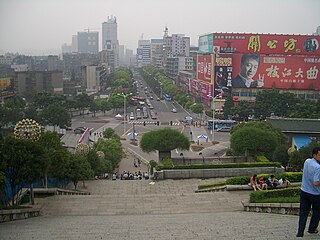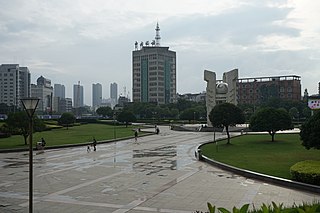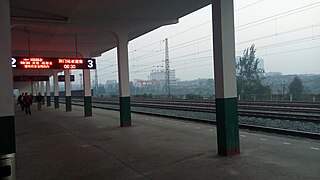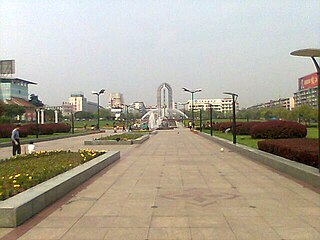| This article is part of a series on |
| Administrative divisions of China |
|---|
Analogous county level units |
Townships Subdistricts County-controlled districts (pilot) |
Analogous township level units |
History: before 1912, 1912–49, 1949–present Administrative division codes |
This article includes a list of references, but its sources remain unclear because it has insufficient inline citations .(January 2018) (Learn how and when to remove this template message) |
The subdistrict [1] (Chinese :街道; pinyin :jiēdào, [2] literally "Street" [3] ) (also abbreviated as 街(Jiē)) is one of the smaller political divisions of the People's Republic of China. It is a form of township-level division which is typically part of a larger urban area, as opposed to a discrete town surrounded by rural areas, or a rural township known as a xiang (乡).

Chinese is a group of related, but in many cases not mutually intelligible, language varieties, forming the Sinitic branch of the Sino-Tibetan language family. Chinese is spoken by the Han majority and many minority ethnic groups in China. About 1.2 billion people speak some form of Chinese as their first language.
Hanyu Pinyin, often abbreviated to pinyin, is the official romanization system for Standard Chinese in mainland China and to some extent in Taiwan. It is often used to teach Standard Mandarin Chinese, which is normally written using Chinese characters. The system includes four diacritics denoting tones. Pinyin without tone marks is used to spell Chinese names and words in languages written with the Latin alphabet, and also in certain computer input methods to enter Chinese characters.
Due to China's large population and area, the administrative divisions of China have consisted of several levels since ancient times. The constitution of China provides for three de jure levels of government. Currently, however, there are five practical levels of local government: the provincial, prefecture, county, township, and village.
In general, urban areas are divided into subdistricts, and a subdistrict is sub-divided into several residential communities or neighbourhoods as well as into villagers' groups (居民区/居住区,小区/社区,村民小组).
A residential community is a community, usually a small town or city, that is composed mostly of residents, as opposed to commercial businesses and/or industrial facilities, all three of which are considered to be the three main types of occupants of the typical community.
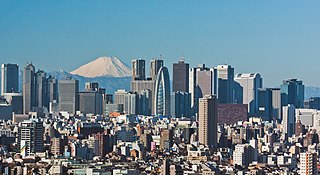
A neighbourhood, or neighborhood, is a geographically localised community within a larger city, town, suburb or rural area. Neighbourhoods are often social communities with considerable face-to-face interaction among members. Researchers have not agreed on an exact definition, but the following may serve as a starting point: "Neighbourhood is generally defined spatially as a specific geographic area and functionally as a set of social networks. Neighbourhoods, then, are the spatial units in which face-to-face social interactions occur—the personal settings and situations where residents seek to realise common values, socialise youth, and maintain effective social control."
The subdistrict's administrative agency is the subdistrict office (Chinese :街道办事处; pinyin :jīedào bànshìchù) [4] or simply the jiedao ban (街道办,jiēdào bàn). Because of the influence of the literal meaning of the Chinese word for 'subdistrict' (street [街道, jiedao]), the term is prone to alternative translations like 'street community'.

Simplified Chinese characters are standardized Chinese characters prescribed in the Table of General Standard Chinese Characters for use in mainland China. Along with traditional Chinese characters, they are one of the two standard character sets of the contemporary Chinese written language. The government of the People's Republic of China in mainland China has promoted them for use in printing since the 1950s and 1960s to encourage literacy. They are officially used in the People's Republic of China and Singapore.


